Filter by

A Grammar of the Mahratta Language To Which Are Added Dialogues on Familiar …
Marathi, an official language of Maharashtra and Goa, is among the twenty most widely spoken languages in the world. The southernmost Indo-Aryan language, it is also spoken in Gujarat, Madhya Pradesh, Karnataka, and Daman and Diu, and is believed to be over 1,300 years old, with its origins in Sanskrit. First published in 1805, this grammar of Marathi (then known as Mahratta) was compiled by th…
- Edition
- Ed. 1
- ISBN/ISSN
- 9781139519847
- Collation
- -
- Series Title
- -
- Call Number
- -

A Grammar of the High Dialect of the Tamil Language, Termed Shen-Tamil
Published in 1822, but completed in manuscript form almost 100 years earlier, this work was designed to accompany Beschi's earlier Grammar of Common Tamil. While the latter enabled the student to speak the language, this reissue offers a way into reading Tamil's classical literature with its complexity of thought and technique. One of the earliest and most distinguished pioneers in the field of…
- Edition
- -
- ISBN/ISSN
- 9781139505918
- Collation
- -
- Series Title
- Cambridge Library Collection - Perspectives from the Royal Asiatic Society
- Call Number
- -
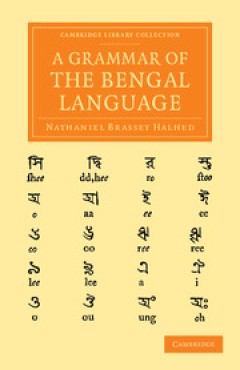
A Grammar of the Bengal Language
The language of Bangladesh, West Bengal and parts of Tripura and Assam, Bengali is an Indo-Aryan language originating from Sanskrit. With over 230 million speakers, it is the sixth most spoken language in the world today. Published in 1778, this was one of the first grammars of Bengali ever compiled. The English orientalist Nathaniel Brassey Halhed (1751–1830) prepared the work during his emp…
- Edition
- -
- ISBN/ISSN
- 9781139519878
- Collation
- -
- Series Title
- Cambridge Library Collection - Perspectives from the Royal Asiatic Society
- Call Number
- -
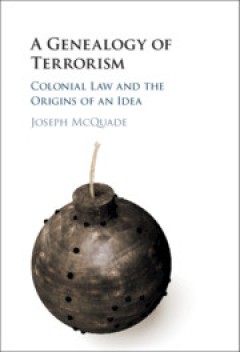
A Genealogy of Terrorism Colonial Law and the Origins of an Idea
Using India as a case study, Joseph McQuade demonstrates how the modern concept of terrorism was shaped by colonial emergency laws dating back into the nineteenth and early twentieth centuries. Beginning with the 'thugs', 'pirates', and 'fanatics' of the nineteenth century, McQuade traces the emerging and novel legal category of 'the terrorist' in early twentieth-century colonial law, ending wi…
- Edition
- -
- ISBN/ISSN
- 9781108896238
- Collation
- -
- Series Title
- -
- Call Number
- -
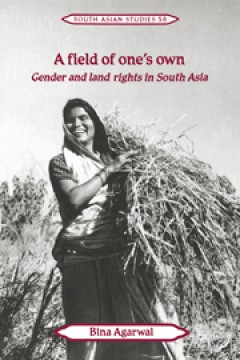
A Field of One's Own Gender and Land Rights in South Asia
This is the first major study of gender and property in South Asia. In a pioneering and comprehensive analysis Bina Agarwal argues that the single most important economic factor affecting women's situation is the gender gap in command over property. In rural South Asia, the most significant form of property is arable land, a critical determinant of economic well-being, social status, and empowe…
- Edition
- -
- ISBN/ISSN
- 9780511522000
- Collation
- -
- Series Title
- Cambridge South Asian Studies (58)
- Call Number
- -
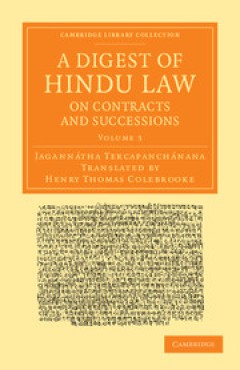
A Digest of Hindu Law, on Contracts and Successions
An honorary professor of Sanskrit and Hindu law at Fort William College in Calcutta, and a key figure in the foundation of the Royal Asiatic Society, Henry Thomas Colebrooke (1765–1837) became Britain's foremost orientalist during the early nineteenth century. Taking up the reins of Sanskrit scholarship following the death of Sir William Jones (1746–94), Colebrooke made several substantial …
- Edition
- -
- ISBN/ISSN
- 9781139519823
- Collation
- -
- Series Title
- Cambridge Library Collection - Perspectives from the Royal Asiatic Society
- Call Number
- -

A Dictionary of the Malay Tongue
Published in 1801, this work is largely based on the first Malay–English dictionary, published 100 years earlier by Thomas Bowrey. A member of the Asiatic Society, although not recognised as a Malay scholar, James Howison seems to have lent his name to this version, produced in order to fill the gap caused by the scarcity of copies of the earlier dictionary. Since the British East India Compa…
- Edition
- -
- ISBN/ISSN
- 9781139519885
- Collation
- -
- Series Title
- Cambridge Library Collection - Perspectives from the Royal Asiatic Society
- Call Number
- -
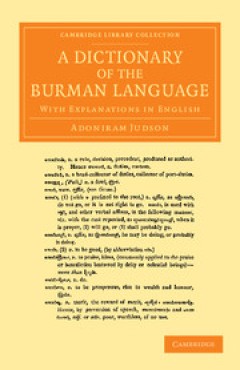
A Dictionary of the Mahratta Language
Marathi, an official language of Maharashtra and Goa, is among the twenty most widely spoken languages in the world. The southernmost Indo-Aryan language, it is also spoken in Gujarat, Madhya Pradesh, Karnataka, and Daman and Diu, and is believed to be over 1,300 years old, with its origins in Sanskrit. First published in 1810, this dictionary of Marathi (then known as Mahratta) was compiled by…
- Edition
- -
- ISBN/ISSN
- 9781139519830
- Collation
- -
- Series Title
- Cambridge Library Collection - Perspectives from the Royal Asiatic Society
- Call Number
- -
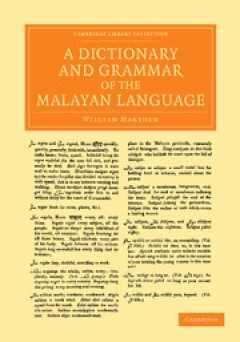
A Dictionary of the Burman Language With Explanations in English
This is the 1826 edition of the Burmese–English dictionary compiled from a grammar and other manuscripts written by the American Baptist missionary Adoniram Judson (1788–1850), with additional content by fellow missionaries Felix Carey and James Coleman. Prepared by the Baptist Mission Press while Judson was imprisoned on suspicion of spying in Ava, it is the fruit of his work towards makin…
- Edition
- -
- ISBN/ISSN
- 9781139519991
- Collation
- -
- Series Title
- Cambridge Library Collection - Perspectives from the Royal Asiatic Society
- Call Number
- -

A Dictionary of the Bengalee Language In Which the Words Are Traced to their…
The language of Bangladesh, West Bengal and parts of Tripura and Assam, Bengali is the sixth most spoken language in the world. A member of the Indo-Aryan family, with its origins in Sanskrit, it has over 230 million speakers. Published in 1825, this is the third volume of a revised three-part dictionary of Bengali, compiled by the Baptist missionary William Carey (1761–1834) during his time …
- Edition
- -
- ISBN/ISSN
- 9781139505970
- Collation
- -
- Series Title
- Cambridge Library Collection - Perspectives from the Royal Asiatic Society
- Call Number
- -
 Computer Science, Information & General Works
Computer Science, Information & General Works  Philosophy & Psychology
Philosophy & Psychology  Religion
Religion  Social Sciences
Social Sciences  Language
Language  Pure Science
Pure Science  Applied Sciences
Applied Sciences  Art & Recreation
Art & Recreation  Literature
Literature  History & Geography
History & Geography